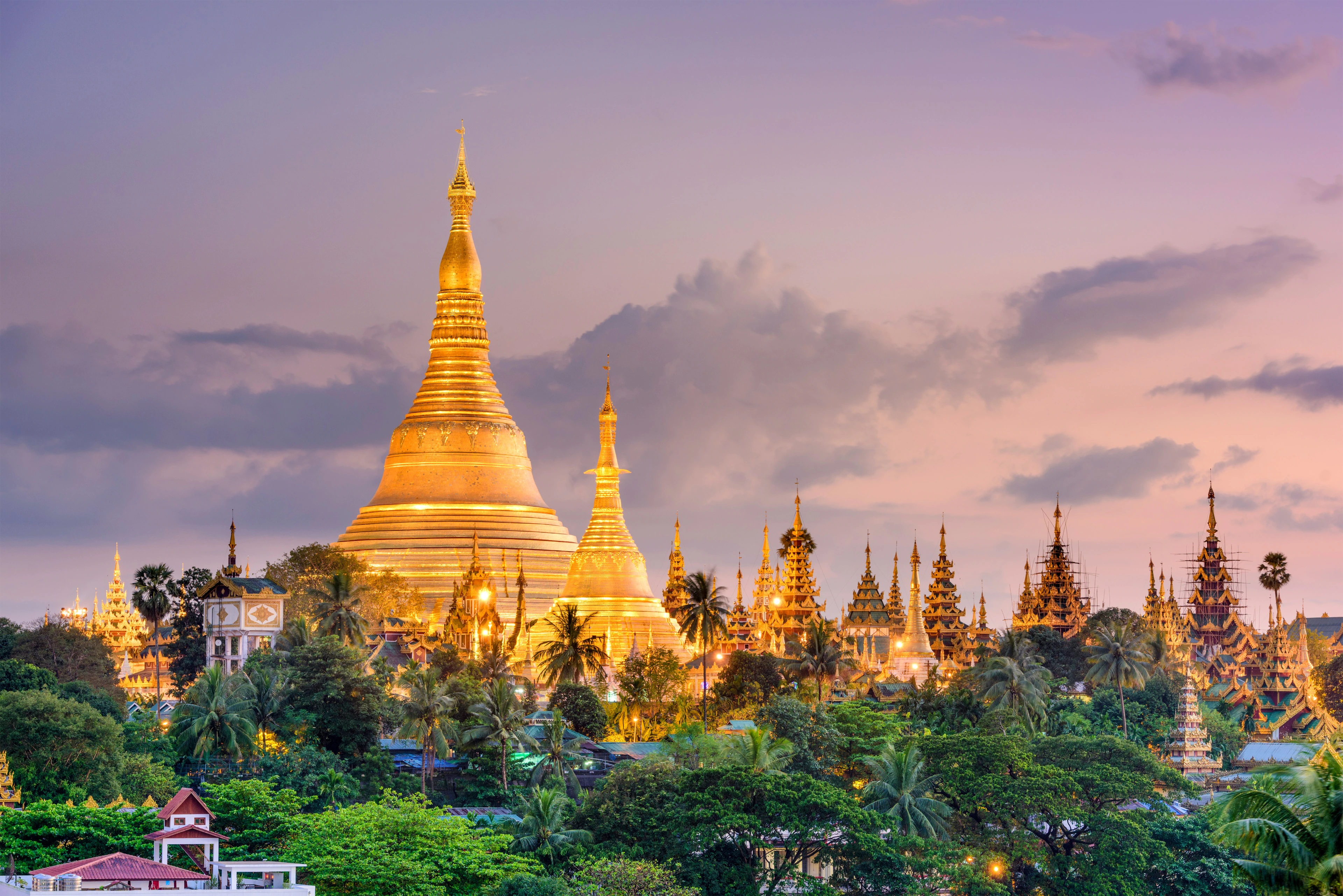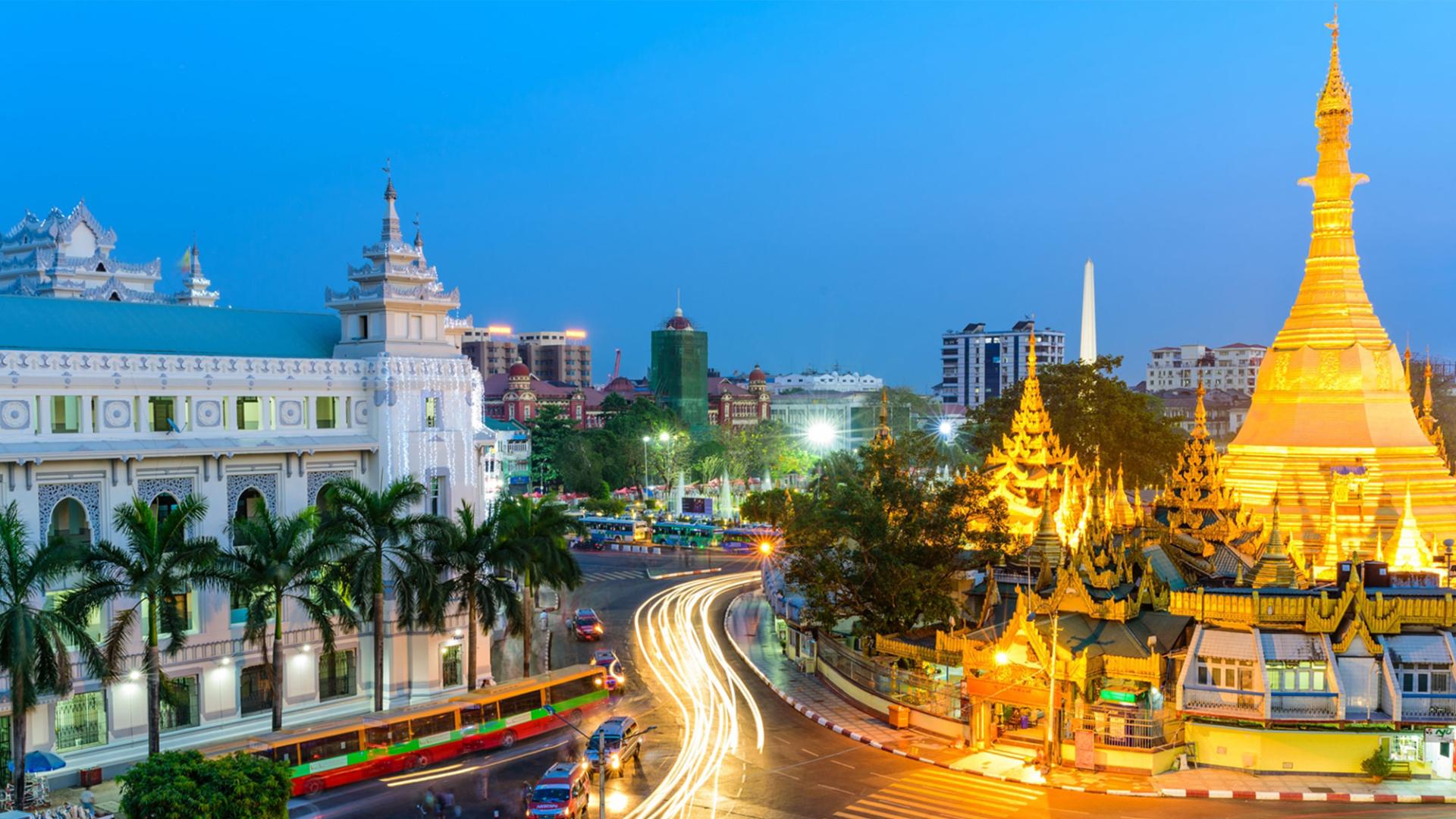

Yangon (pronunciation [jàɰ̃ɡòʊɰ̃ mjo̰], lit. 'End of Strife'), also known as Rangoon, is the capital of the Yangon Region and the largest city of Myanmar (also known as Burma). Yangon served as the capital of Myanmar until 2006, when the military government relocated the administrative functions to the purpose-built city of Naypyidaw [nèpjìdɔ̀] in central Myanmar.[3] With over 7 million people, Yangon is Myanmar's most populous city and its most important commercial centre.
Yangon boasts the largest number of colonial-era buildings in Southeast Asia,[4] and has a unique colonial-era urban core that is remarkably intact.[5] The colonial-era commercial core is centered around the Sule Pagoda, which is reputed to be over 2,000 years old.[6] The city is also home to the gilded Shwedagon Pagoda – Myanmar's most sacred Buddhist pagoda. The mausoleum of Bahadur Shah Zafar, the last Mughal Emperor is located in Yangon, where he had been exiled following the Indian Mutiny of 1857.
Yangon suffers from deeply inadequate infrastructure, especially compared to other major cities in Southeast Asia. Though many historic residential and commercial buildings have been renovated throughout central Yangon, most satellite towns that ring the city continue to be profoundly impoverished and lack basic infrastructure.[7]
Rangoun1 (en birman ရန်ကုန်, prononcé API : /jàɴɡòʊɴ mjo̰/) ou Rangoon2, officiellement renommée Yangon en 1989, est la capitale économique et la plus grande ville de la Birmanie (ou Myanmar) avec 4,5 millions d'habitants. Située sur le fleuve Yangon né de la confluence des rivières Bago (rivière) et Myitmaka, elle se trouve à trente kilomètres du golfe de Martaban, sur la mer d'Andaman.
Son nom birman Yangon est formé de yan (ရန္) et koun (ကုန္), qui signifient « ennemis » et « manquer de », respectivement. Le nom peut donc être traduit comme « fin de la discorde », « fin du conflit ». Rangoon/Rangoun, quant à lui, vient probablement de la mauvaise prononciation de Yangon de la part des Britanniques.
Rangoun fut la capitale de la Birmanie britannique, puis indépendante, à partir de 1853. En novembre 2005, la junte militaire au pouvoir a commencé à déplacer sa capitale à l'intérieur du pays, à Naypyidaw (Région de Mandalay). Naypyidaw est officiellement la nouvelle capitale depuis le 26 mars 20073.
Rangoun est la ville ayant le plus grand nombre d'édifices coloniaux de toute l'Asie du Sud-Est4. Des bureaux du gouvernement situés dans des immeubles coloniaux (la Cour suprême, la mairie, le marché Bogyoke, etc.) seront bientôt rénovés5. Mais après le coup d'État militaire du général Ne Win en 1962, Rangoun resta peu développée, par rapport aux autres grandes villes d'Asie du Sud-Est. Toutefois, le domaine de la construction voit un essor dû à l'investissement étranger (notamment de Singapour et de Chine). Beaucoup d'immeubles résidentiels et commerciaux ont été reconstruits ou modifiés au centre-ville et aux environs. Les « villes nouvelles » (မ္ရုိ့သစ္) et la région environnante restent pauvres.
Yangon (nota anche come Rangoon) è la più grande città della Birmania .
Rangún,2 nombre en español de Yangón o Yangôn (nombre oficial según las autoridades birmanas), es la ciudad más grande de Birmania, antigua capital del país hasta 2005, año en que fue sustituida por Naipyidó. Cuenta con una población estimada de 5.430.000 habitantes (2016). La ciudad se encuentra en las orillas del río Yangón, cerca del golfo de Martaban.
El término Yangón (en español, Rangún) proviene de las palabras birmanas yan y koun que significan “ciudad sin enemigos”.
En comparación con otras ciudades importantes del sudeste asiático, Rangún no está muy desarrollada aunque existe un auge en la construcción debido, sobre todo, a la influencia de la inversión privada, principalmente de la que procede de Singapur y China. En el centro de la ciudad y en el área metropolitana se han reconstruido y remodelado numerosos pisos y centros comerciales (conocidos como taik). Rangún posee el mayor número de edificios coloniales de la zona entre los que destacan las oficinas del gobierno, la Corte Suprema, el Ayuntamiento o el Hospital General, todos ellos restaurados o en proceso de restauración. Los barrios periféricos como Thaketa o las "nuevas ciudades" (myo-thit) son áreas pobres con un marcado carácter suburbial.
Янго́н[3], ранее — Рангу́н[4] (бирм. ရန်ကုန်, jàɴɡòʊɴ MLCTS: Rangun — Янгоун[5]) — крупнейший город и столица Мьянмы с 1989 по 2005 годы. До переименования в 1989 был известен под названием Рангун и являлся столицей Бирмы с момента обретения страной независимости в 1948 году. Население около 7 млн человек. Важнейший экономический, культурный и образовательный центр страны. Крупный транспортный узел. 6 ноября 2005 года резиденция правительства перенесена в Нейпьидо[6].







